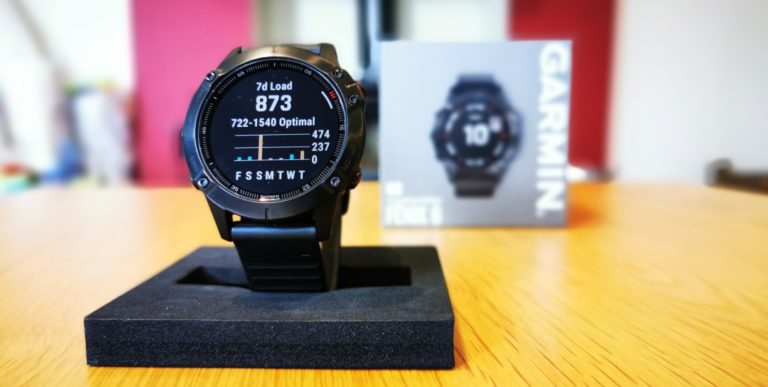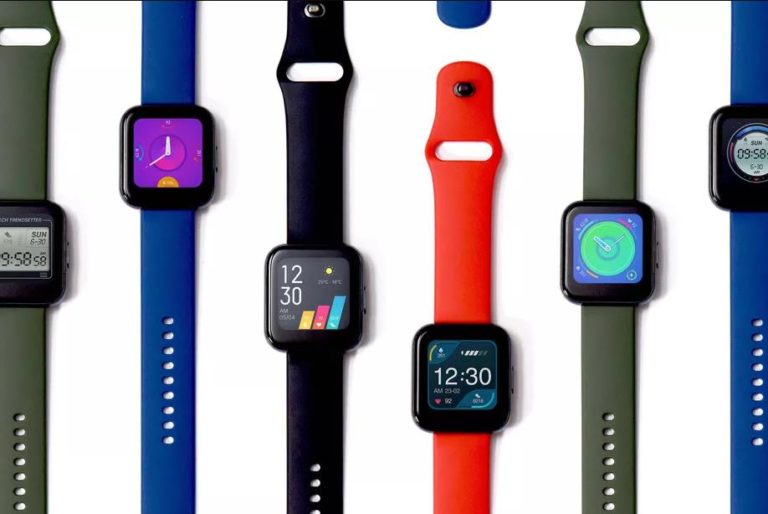Any links to online stores should be assumed to be affiliates. The company or PR agency provides all or most review samples. They have no control over my content, and I provide my honest opinion.
MediaTek announced the Helio G90T a few months ago and the Xiaomi Redmi Note 8 Pro is the first and only phone to use this chipset.
MediaTek is not particularly well known for their high-performance chipsets so this launch has come as a bit of a surprise with the specification looking like it should provide better overall performance than the Qualcomm Snapdragon 730G.
With the recent launch of the Realme X2, I now have both phones so I have been able to benchmark them thoroughly to see which is best.
MediaTek Helio G90T vs Qualcomm Snapdragon 730G Specs Comparison
| Snapdragon 765G | Qualcomm Snapdragon 730G | MediaTek Helio G90T | |
|---|---|---|---|
| CPU | 1x Kryo 475 Prime (CA76) @ 2.3GHz (non-G) @ 2.4GHz (765G) 1x Kryo 475 Gold (CA76) @ 2.2GHz 6x Kryo 475 Silver (CA55) @ 1.8GHz | 2 x Kryo 470 Gold – Cortex A76 Clock frequency: Up to 2.2 GHz 6 x Kryo 470 Silver – Cortex A55 Clock frequency: Up to 1.8 GHz) 8 nm, 64 bit | 2x ARM Cortex-A76 up to 2.05GHz 6X ARM Cortex-A55 up to 2GHz 12 nm, 64 bit |
| GPU | Adreno 620 +20% perf (non-G) +38% perf (765G) | Adreno 618 | Mali G76 3EEMC4 800 MHz |
| AI | Hexagon 696 HVX + Tensor 5.4TOPS AI (Total CPU+GPU+HVX+Tensor) | Hexagon 688 HVX + Tensor | |
| Memory | 2x 16-bit CH @ 2133MHz LPDDR4X / 17.0GB/s | 2x 16-bit CH @ 1866MHz LPDDR4X 14.9GB/s | |
| Camera | Dual 14-bit Spectra 355 ISP 1x 192MP or 36MP with ZSL or 2x 22MP with ZSL | Up to 192 MP single camera Up to 22 MP dual cameras | Up to 24 + 16 MP dual cameras Up to 64 MP single camera |
| Video features | 2160p30, 1080p120 H.264 & H.265 10-bit HDR pipelines | Up to 4K Ultra HD at 30 fps (video recording) Up to 4K Ultra HD (video playback) | Up to 4K Ultra HD at 30 fps |
| Display | Up to Quad HD 3360 x 1440 pixels | Up to Full HD+ | |
| Connectivity | Wi-Fi 5. Bluetooth 5.0 NFC Cellular Modem: Snapdragon X15 LTE, up to 800 Mbps, upload speed up to 150 Mbps | Wi-Fi 5 Bluetooth 5.0 Cellular Modem: LTE Cat.12 Download, Cat.13 Upload | |
| Memory | LPDDR4X | Up to 10 GB, dual-channel LPDDR4X at 2133 MHz eMMC 5.1 / UFS 2.1 internal storage | |
| Location | GPS, GLONASS, Beidou, Galileo, QZSS, SBAS | GPS, GLONASS, Beidou, Galileo | |
| Battery Charging | Qualcomm Quick Charge 4+ | Fast battery charging |
Antutu Benchmarks
Antutu has been upgraded to v8 on the Play Store so this is what I used for the benchmarks, it is therefore different that results that may have been posted a few weeks ago.
The phones score:
| Xiaomi Redmi Note 8 Pro | Realme X2 | |
|---|---|---|
| Total | 281295 | 258311 |
| CPU | 98263 | 98328 |
| GPU | 79755 | 67574 |
| MEM | 57285 | 47945 |
| UX | 45992 | 44464 |
It probably comes as no surprise that the CPU score is similar, the Qualcomm has a higher clocks primary core but lower for the efficient cores, the Meditek does things the other way around.
Things are very different when you move to the GPU, the Mali G76 comfortably outperforms the Adreno 618 on the Qualcomm.
Similarily the memory is clocked higher on the MediaTek Helio G90T which allows it to pull ahead for the memory test.
The MediaTek is then able to score slightly above with the UX test.
Antuntu v8 test results from recent reviews
The results below are from recent reviews carried out by myself. The Black Shark 2 is currently having issues loading Antuntu so I have only used its total score, but it gives you a good idea of how each chipset performs.
| Chipset | Total | CPU | GPU | MEM | UX | |
|---|---|---|---|---|---|---|
| OnePlus 7T | Snapdragon 855+ | 487050 | 144155 | 199255 | 70043 | 73597 |
| Realme X2 Pro | Snapdragon 855+ | 473329 | 142596 | 190964 | 799966 | 59803 |
| Black Shark | Snapdragon 855 | 442971 | ||||
| Xiaomi Mi Mix 3 5G | Snapdragon 855 | 429859 | 144036 | 172351 | 56044 | 57428 |
| Xiaomi Redmi K30 5G (Leaked score) | Snapdragon 765G | 302847 | 98651 | 87564 | 57985 | 58647 |
| Xiaomi Redmi Note 8 Pro | Mediatek Helio G90T | 281295 | 98263 | 79755 | 57285 | 45992 |
| Realme X2 | Snapdragon 730G | 258311 | 98328 | 67574 | 47945 | 44464 |
| Realme 5 Pro | Snapdragon 712 | 216501 | 73459 | 61872 | 42013 | 39157 |
| Honor 9X | Kirin 710F | 172710 | 64742 | 21250 | 50747 | 35971 |
| Realme 5 | Snapdragon 665 | 167866 | 71157 | 33489 | 36568 | 26652 |
3DMark Benchmarks
With the GPU result from Antutu, you might think the MediaTek Helio G90T in the Redmi Note 8 Pro would storm ahead, but not so. Things are much closer with each phone doing better in a separate result.
The MediaTek Helio G90T scores 2377 in Sling Shot Extreme OpenGL with a graphics score of 2209 and a physics score of 3241.
Then in Sling Shot Extreme Vulcan, it gets a total of 2454 with a graphics score of 2379 and physics of 2760.
For the Realme X2 using the Qualcomm Snapdragon 730G, for Sling Shot Extreme OpenGL it scores a total of 2405 with graphics at 2248 than the physics at 3181.
Then in Sling Shot Extreme Vulcan, it gets a total of 2270 with a graphics score of 2162 and physics of 2751.
In terms of overall points, the MediaTek Helio G90T has the overall lead, but in real-world the difference is so small I doubt it would be noticeable.
Geekbench Benchmarks
In Geekbench 5 the MediaTek Helio G90T gets 504 for the single-core and 1641 for multi-core.
The Qualcomm Snapdragon 730G gets 546 for the single-core and 1729 for multi-core.
The higher clocked Kryo 470 Gold cores of the Qualcomm Snapdragon 730G clearly come into play here.
Geekbench 5 results for reviews
| Chipset | Single-Core | Multi-Core | |
|---|---|---|---|
| Realme X2 Pro | Snapdragon 855+ | 622 | 2660 |
| Black Shark | Snapdragon 855 | 535 | 2059 |
| Realme X2 | Snapdragon 730G | 546 | 1729 |
| Xiaomi Redmi Note 8 Pro | Mediatek Helio G90T | 504 | 1641 |
| Realme 5 Pro | Snapdragon 712 | 321 | 1481 |
| Honor 9X | Kirin 710F | 326 | 1346 |
| Realme 5 | Snapdragon 665 | 316 | 1363 |
AI Benchmarks
Not as important as the other benchmarks, but companies are determined to highlight how good the AI on their devices is.
The MediaTek Helio G90T comes out with a surprise result of 13232 which is more than double the Qualcomm Snapdragon 730G which only gets 6372.
This is inconsistent with the AI Benchmarks chart, and there are a few discrepancies with it overall, which could indicate that this benchmark may not be the best representation of AI performance.
For example, the Oppo Reno Z with a Mediatek Helio P90 scores higher than some SD855 phones, and higher than the OnePlus 7T. The Xiaomi Redmi K20 with Snapdragon 730 scores higher than the Xiaomi Redmi Note 8 Pro with the Mediatek Helio G90T. So the ranking table is a complete mess of questionable results.
Androbench
Not completely relevant for a chipset comparison, Androbench tests storage speeds, but I have done it anyway.
| Xiaomi Redmi Note 8 Pro | Realme X2 | |
| Seq Rd | 524 | 504 |
| Seq Wr | 187 | 190 |
| Rnd Rd | 38549 | 34073 |
| Rnd Wr | 39972 | 35734 |
PCMark
Finally, for PCMark Work 2.0, the Xiaomi Redmi Note 8 Pro receives a score of 10148
Overall
The results won’t necessarily be the same across different phones from other brands, software optimisation will have an effect plus the specification differences with RAM etc.
The Xiaomi Redmi Note 8 Pro with the MediaTek Helio G90T is the clear overall winner in terms of performance. How much of a difference this makes in the real world is another question. I doubt it is noticeable if I am honest, and I haven’t noticed any differences between the two yet.
It is worth noting that the MediaTek Helio G90T uses the 12nm fabrication process which will make it far less power efficient than the Snapdragon 730G. However, in the case of this phone, you get a 4500mAh battery which I suspect will counter any problems it causes.
I am James, a UK-based tech enthusiast and the Editor and Owner of Mighty Gadget, which I’ve proudly run since 2007. Passionate about all things technology, my expertise spans from computers and networking to mobile, wearables, and smart home devices.
As a fitness fanatic who loves running and cycling, I also have a keen interest in fitness-related technology, and I take every opportunity to cover this niche on my blog. My diverse interests allow me to bring a unique perspective to tech blogging, merging lifestyle, fitness, and the latest tech trends.
In my academic pursuits, I earned a BSc in Information Systems Design from UCLAN, before advancing my learning with a Master’s Degree in Computing. This advanced study also included Cisco CCNA accreditation, further demonstrating my commitment to understanding and staying ahead of the technology curve.
I’m proud to share that Vuelio has consistently ranked Mighty Gadget as one of the top technology blogs in the UK. With my dedication to technology and drive to share my insights, I aim to continue providing my readers with engaging and informative content.











